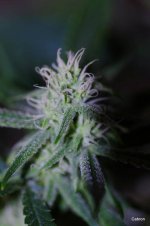You are using an out of date browser. It may not display this or other websites correctly.
You should upgrade or use an alternative browser.
You should upgrade or use an alternative browser.
Mosaic Virus in Cannabis pics
- Thread starter Wandering Roman
- Start date
different plant, same strain (both are from the same f2s), this one is close to harvest.
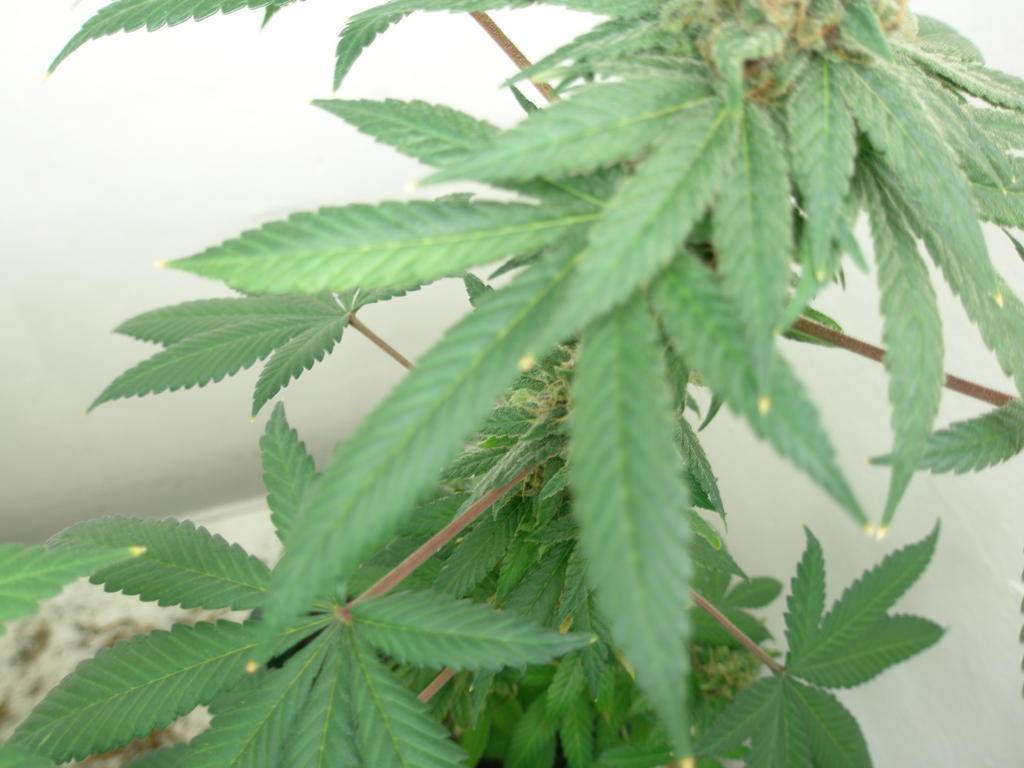
its obviously in soil that had too much nitrogen, as you can tell by the burnt tips. its been getting straight water for at least a couple weeks now and the leaves are still green.
The bottom of the plant is seeded but now i'm worried that in the off chance it IS a virus the seeds will also have it.
its obviously in soil that had too much nitrogen, as you can tell by the burnt tips. its been getting straight water for at least a couple weeks now and the leaves are still green.
The bottom of the plant is seeded but now i'm worried that in the off chance it IS a virus the seeds will also have it.
BlueGrassToker
Active member
Everybody knows about the crinkle leaf traits of dj shorts thai genetics that he used to make blueberry and other strains. I've grew his gear and never noticed the variegated leafs that tmv plants show. You might be right about some things bluegrass, I am done with this thread, Peace.
Don't take off, L2h...just maybe if we hash through things we can all come to some sort of realization?
Just bear with me and read through what I am offering up here...
OK, I have explained in this thread how the one F13 that I have been using carries the DJ mutant trait. It doesn't show any mutation at all besides the occasional branch that has variegated leaves. If I hadn't pollinated it I would have no idea it carried the trait in such dominance.
But she does, and everything I breed to her produces seeds that produce severely mutated plants. I show them in this thread.
Now..it is not too far a stretch to think that some elite cut also carries a mutation in it's genes. It may not show it at all, but it is there just like in my mother f13. The only way you may see the trait would be to pollinate her with something and grow out the progeny.
Now, if this happened and you as well as others started seeing lots of plants mutating, it would be easy to state it was a virus...especially if you knew nothing about how deleterious mutations and other anomalies can manifest themselves.
Like I have stated before, IMO most all of what we are seeing here are the results of either nutrient deficiencies, stress reactions, and genetic mutations. If there are any that are actually TMV, then it would serve us all for the owner of such a plant show us a positive test strip. They are cheap and easy I think.
I think that a pic of a positive strip should be prerequisite to posting a photo of a claimed virus. But maybe that would be asking too much?
Maybe we should just take what we read here to heart and start culling our gardens when a plant shows a funny leaf...or when a buddy tells us we are fucked with a virus?

Mosaic Virus in Cannabis pics
What do you call a 'mutation' that passes to other individuals that had not previously shown any 'disorders' asexually?
What would you call that?
And im not saying it is tmv or isnt tmv...
Im saying its an mv of some sort fyi...
Im curious...Now..it is not too far a stretch to think that some elite cut also carries a mutation in it's genes.
What do you call a 'mutation' that passes to other individuals that had not previously shown any 'disorders' asexually?
What would you call that?
And im not saying it is tmv or isnt tmv...
Im saying its an mv of some sort fyi...
BlueGrassToker
Active member
If it's a mosaic virus of some sort, then I suppose that is what you call it.
A plant with a virus will indeed infect other plants that come in contact with it, as well as those you touch after touching the infected plant. When it comes to cabinets and small grows, I can't imagine everything in there also not being viral affected if there is but one sick plant.
Thing is...I think some will see several clones all do the same thing and feel they are all infected, when it may be that they are all seeing the same medium, feed, and/or stress.
Seems to me a test strip would satisfy all minds.
A plant with a virus will indeed infect other plants that come in contact with it, as well as those you touch after touching the infected plant. When it comes to cabinets and small grows, I can't imagine everything in there also not being viral affected if there is but one sick plant.
Thing is...I think some will see several clones all do the same thing and feel they are all infected, when it may be that they are all seeing the same medium, feed, and/or stress.
Seems to me a test strip would satisfy all minds.
I want to order some test strips, but if i get the TMV test and it comes up negative there is still the chance that it could be one of the other viruses. Testing for each virus could get expensive.
I want to order some test strips, but if i get the TMV test and it comes up negative there is still the chance that it could be one of the other viruses. Testing for each virus could get expensive.
That's exactly why i haven't done it, i have a virus without a doubt beit TMV or not it must be some sort of variant.
Whats interesting is my chilli seedlings are now infected, they are sat by the flower bed in my garden in seedling trays there is a lettuce in the flower bed which now looks infected and a weed that is also showing the same symptoms..
Il take some pics tomorrow..
Peace
BlueGrassToker
Active member
These will probably detect most any virus that attacks cannabis.
About $30 for 5 tests.
About $30 for 5 tests.
https://orders.agdia.com/InventoryD.asp?attribute_Size=5&collection=ISK+57400&loc=INThe TMV ImmunoStrip detects a variety of viruses from the tobamovirus group. Our experience shows that the test can detect the following: Cucumber green mottle mosaic virus (CGMMV), Kyuri green mottle mosaic virus, Odontoglossum rinspot virus (ORSV), Pepper mild mottle virus (PMMoV), Ribgrass mosaic virus (RMV), Streptocarpus flower break virus (SFBV), Sunhemp mosaic virus (SHMV), Tobacco mosaic virus including common strain (TMV and TMV-c), Tomato mosaic virus (ToMV). This test, however, is not a tobamovirus group test and was tested for its effectiveness at detecting TMV.
Mosaic Virus in Cannabis pics
Exactly. Thank you.
Thing is test strips arent always right. Example... My wife had to take a pregnancy test at her first dr appt after giving birth. They gave her 2 different pee test strips because no one believed the results of the first... and both came back "pregnant"... Doc ordered a blood test the next day... Results were "not pregnant" (which was a lil sad but a huge relief haha).
What we really really need is some biological samples to be checked out by a botanist/scientist.
Of course thatll only positively id whats going on w the test group individuals... But if its a real mv of any kind we can try to backtrack whos got or had the clone/s and then track potential spread. I think....
I wish i was still in college. Or knew someone in the botany department at uci....
If it's a mosaic virus of some sort, then I suppose that is what you call it.
A plant with a virus will indeed infect other plants that come in contact with it, as well as those you touch after touching the infected plant. When it comes to cabinets and small grows, I can't imagine everything in there also not being viral affected if there is but one sick plant.
Exactly. Thank you.
Seems to me a test strip would satisfy all minds.
Thing is test strips arent always right. Example... My wife had to take a pregnancy test at her first dr appt after giving birth. They gave her 2 different pee test strips because no one believed the results of the first... and both came back "pregnant"... Doc ordered a blood test the next day... Results were "not pregnant" (which was a lil sad but a huge relief haha).
What we really really need is some biological samples to be checked out by a botanist/scientist.
Of course thatll only positively id whats going on w the test group individuals... But if its a real mv of any kind we can try to backtrack whos got or had the clone/s and then track potential spread. I think....
I wish i was still in college. Or knew someone in the botany department at uci....
BlueGrassToker
Active member
Sure tests can fail...but most times they will reflect a false positive due to hormones or something that actually triggers the positive result, rather than the strips being faulty.
The TMV strips will work as advertised and they come from a lab that does this stuff all the time. That place is FULL of botanists.
And a little aside...I have been involved in lab testing for quite some time. It is common for a university to offer up testing services pro bono. They have equipment and need things for students to test.
Thing is...the university has no stake in the game. A reputable lab, on the other hand, has everything at stake. As a result, the for profit lab has no choice but to keep things calibrated. They know that calibration of equipment and perfection in process is what keeps them alive. The results fro a reputable for profit lab are FAR more trusted than anything that comes from any university.
Remember, the university is full of the learning and there are very few of the learned there. In the for profit lab, it is the other way around.
If I owned a dispensary, it would be mandatory that anything that entered my facility be quarantined and tested. Advertizing this would probably pay for it easy. It would also spark other competitors to follow suit.
The TMV strips will work as advertised and they come from a lab that does this stuff all the time. That place is FULL of botanists.
And a little aside...I have been involved in lab testing for quite some time. It is common for a university to offer up testing services pro bono. They have equipment and need things for students to test.
Thing is...the university has no stake in the game. A reputable lab, on the other hand, has everything at stake. As a result, the for profit lab has no choice but to keep things calibrated. They know that calibration of equipment and perfection in process is what keeps them alive. The results fro a reputable for profit lab are FAR more trusted than anything that comes from any university.
Remember, the university is full of the learning and there are very few of the learned there. In the for profit lab, it is the other way around.
If I owned a dispensary, it would be mandatory that anything that entered my facility be quarantined and tested. Advertizing this would probably pay for it easy. It would also spark other competitors to follow suit.
OK, well several years ago you had a plant that all of a sudden picked up something that made it deform for whatever reason. It is very likely a mother plant could pick up a virus of some sort, but it is very unlikely. Far more likely it gets attacked by some sort of fungus.
Now, whatever you saw in this mom you saw come into another plant you had. Same look, same thing...or at least that what I take from what you have told us. It was an assumption you made, back however many years ago, that your first plant caught a virus, and eventually passed it on to another plant you had.
I can buy your assuming this was the case. But maybe it wasn't the case? It seems to me that when you see a mutation you automatically assume a viral attack. But there are things that can cause plants to deform and mutate that are not associated with viral or fungal attacks.
I will go into my theory on mutations and such in a bit, but first I want to put to rest your suspicion that I may have plants being effected by a virus. My "proof" as it were...
I know the f13 line. As I stated before, I grew and flowered a mutant F1 right out of the DJ pack. There is plenty of evidence of other folks finding very scrawny, low yielding mutated phenotypes in the f1 offerings, so it is not just some fluke thing I happened onto.
I couple years ago I kept an f13 that showed no mutation, or at least it does not have deformed leaves and scragly growth. It has some other very special qualities so it was chosen as my keep. I opted not to do anything but smoke the mutant plant because I didn't really want to pass on any of what I saw from that plant.
...thing is, the plant I did choose passes mutation on down the like in dominant AA fashion. A very high percentage of her progeny will carry the very same mutation. And you will find with very little search effort at all reports of others seeing exactly what I see in the progeny of f13.
Let's just see a few for shits sake....
This seedling f13 cross shows the classic "half leaf" mutation that is often seen in DJ Shorts lines. He has written about this very thing on several occasions.
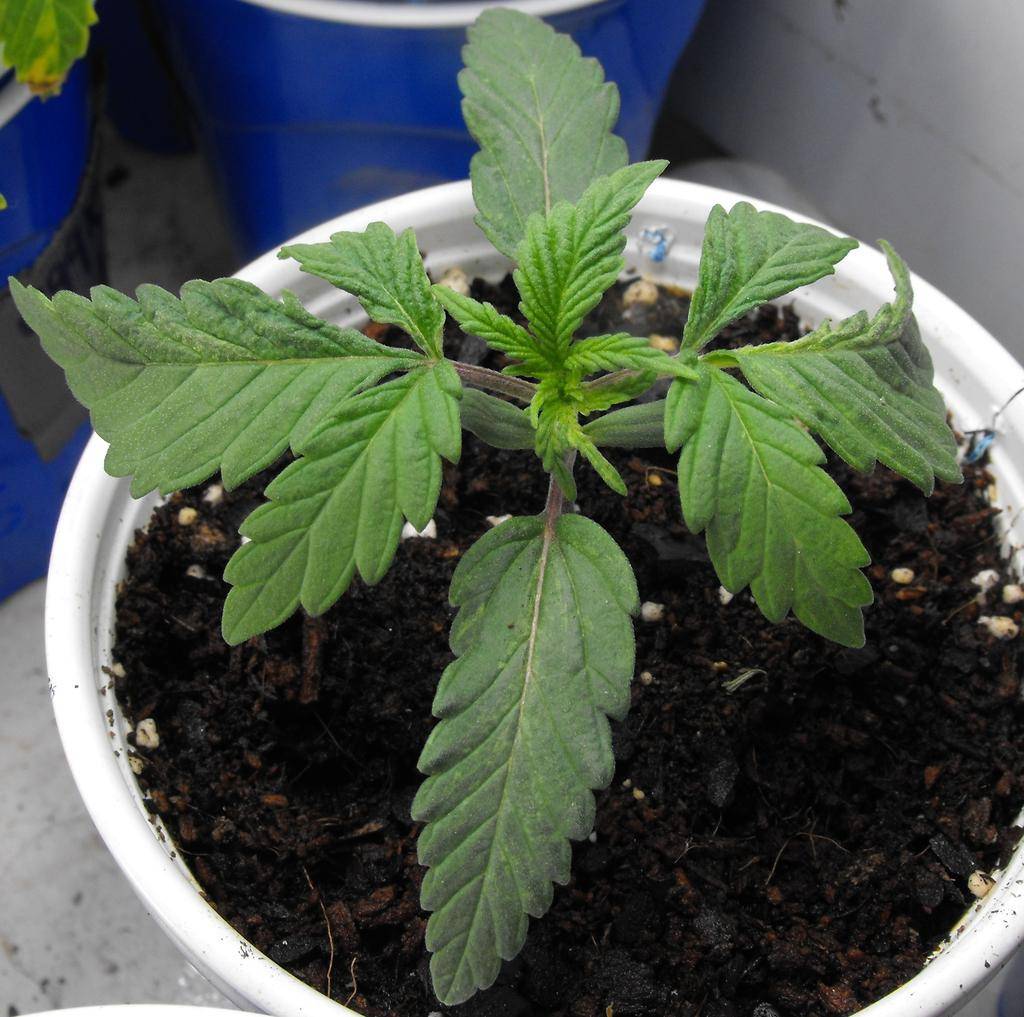
The mutation can manifest to differing degrees...
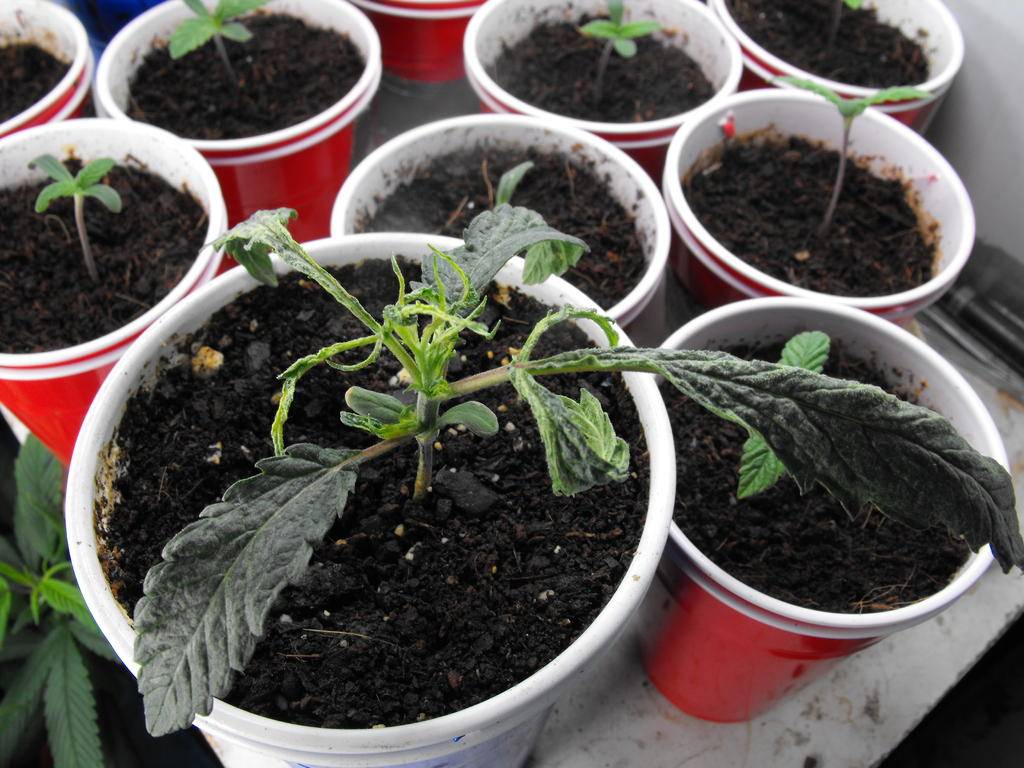
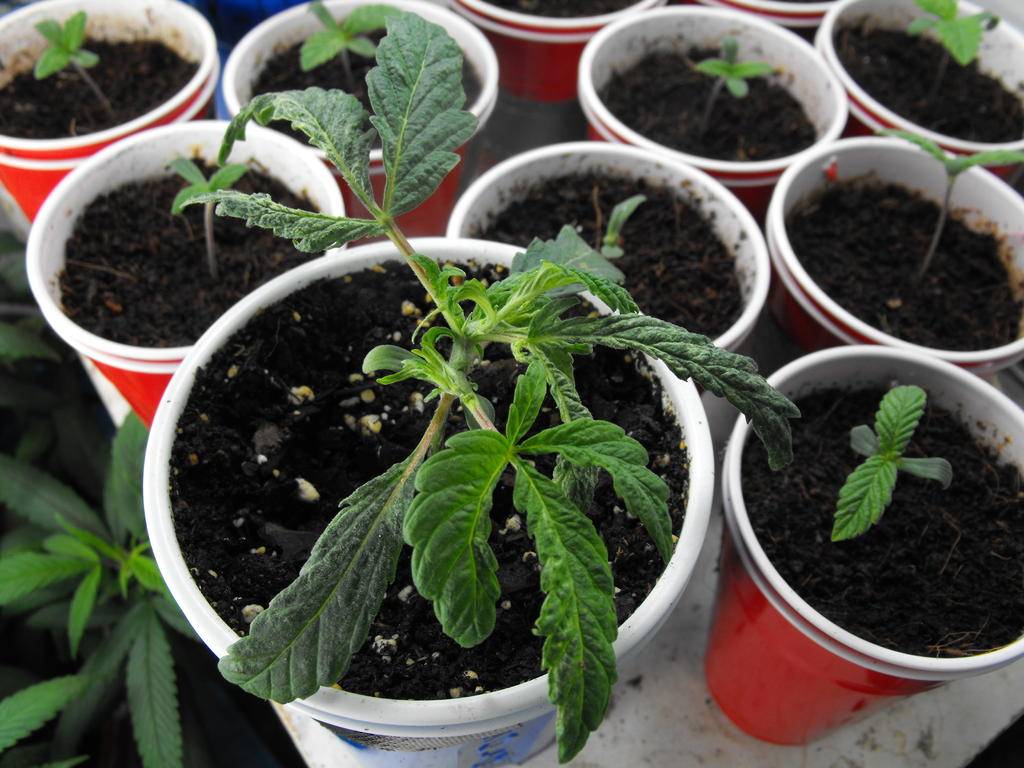
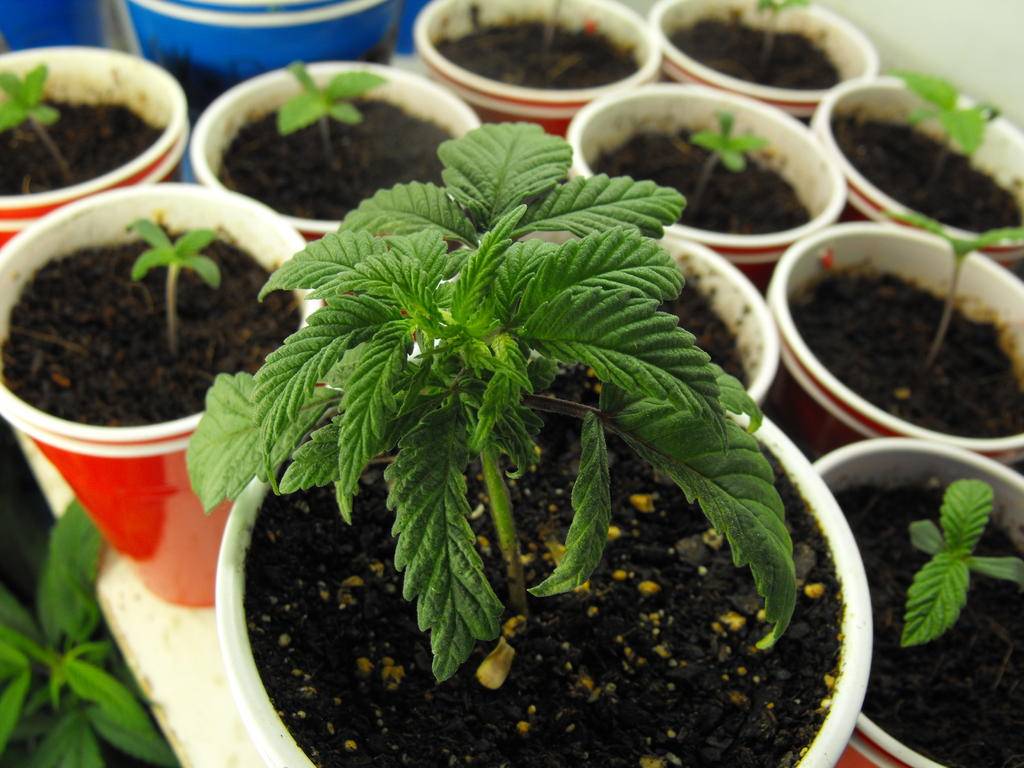
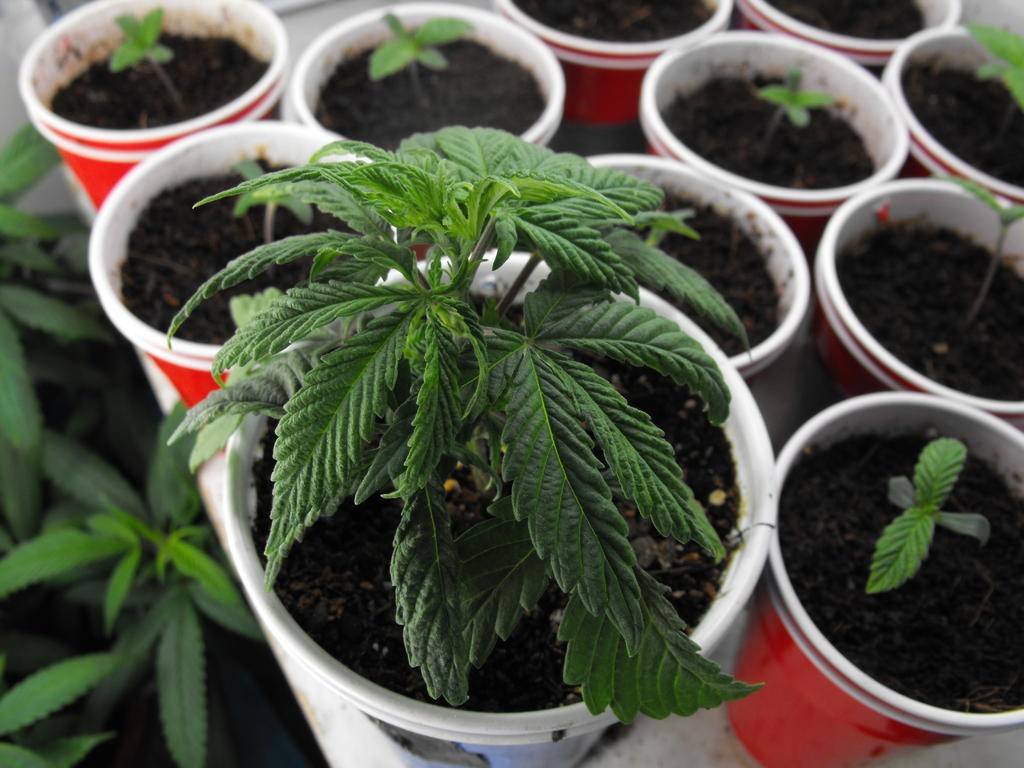
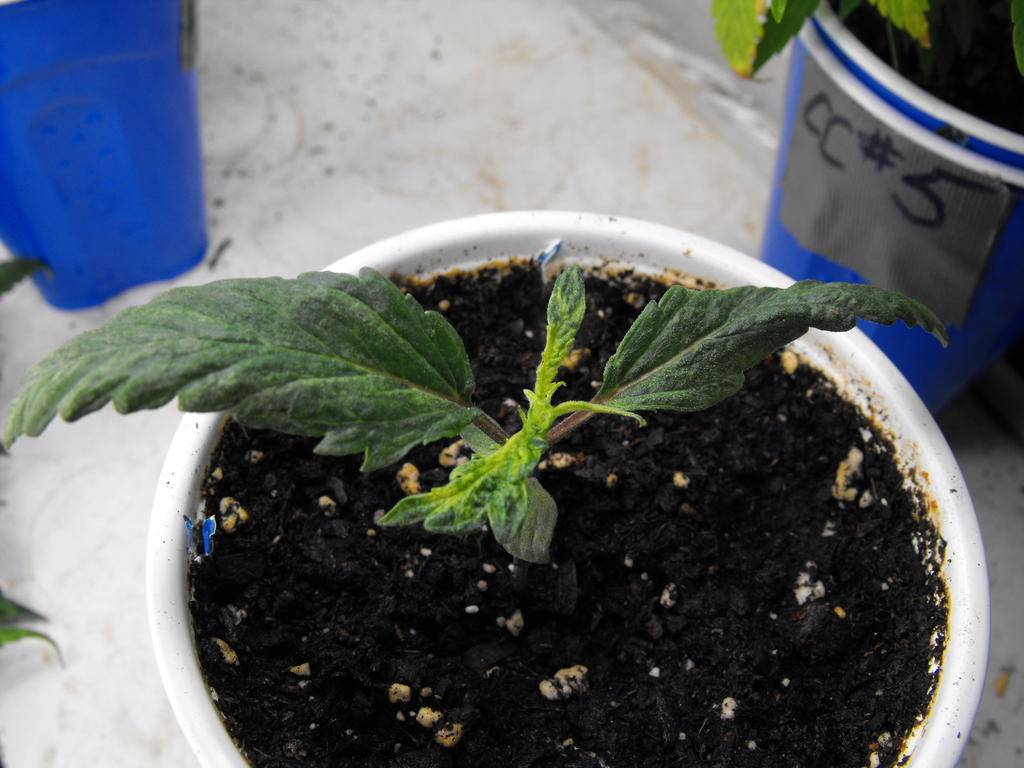
Some don't show the mutation at all, and grow out beautifully as seen in these two full sibs to all the above plants...
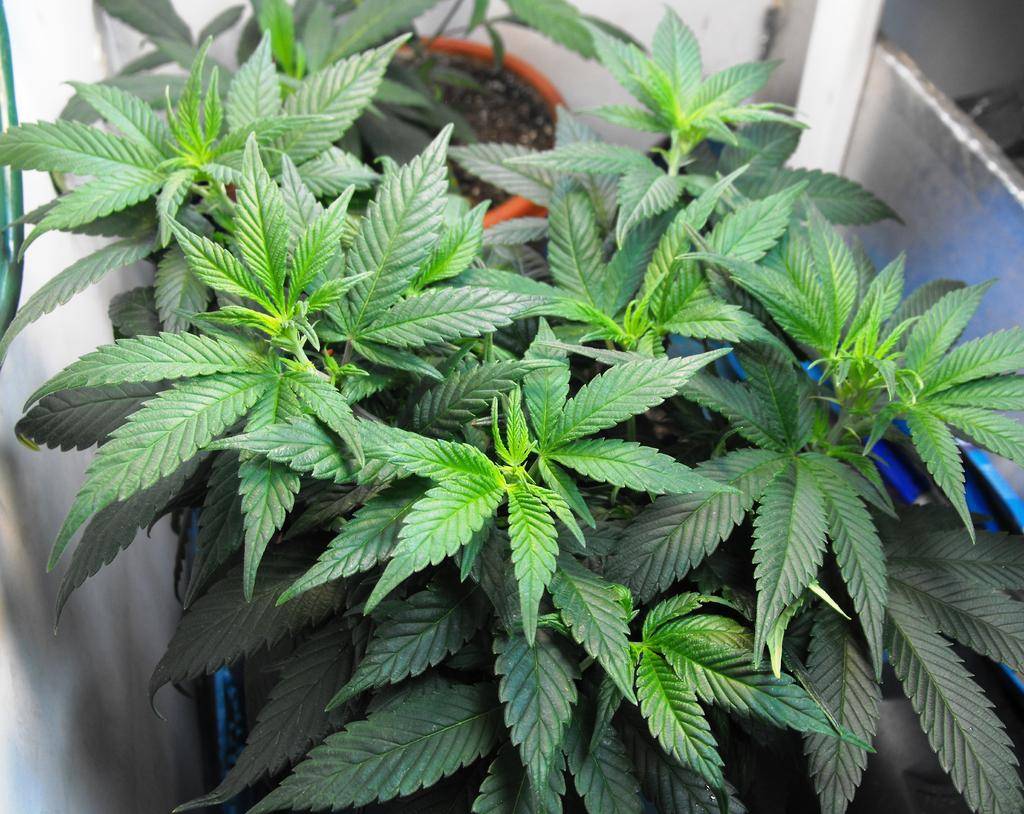
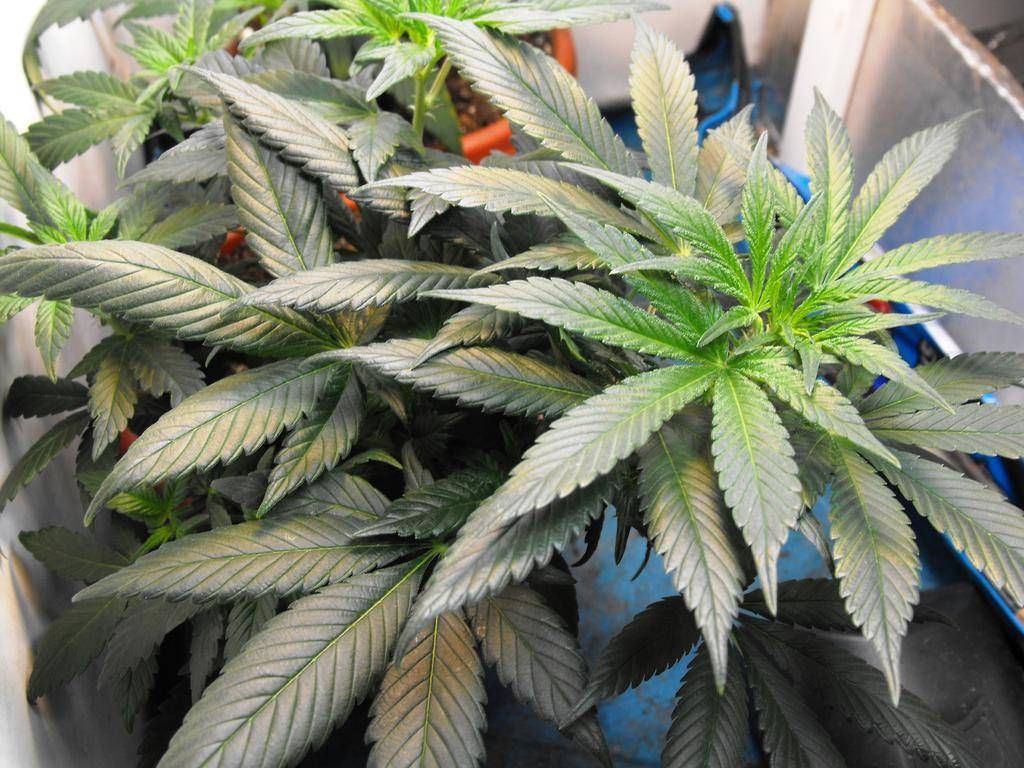
There are those following this thread that are familiar with mutations, and they know as I do that it has nothing to do with viral attacks. They can show you exactly what I am showing you as far as mutations and variegation goes.
Which brings me back to my theories on the whole thing...
The mutation seen in the f13 and her crosses is from severe inbreeding. It can, and will, happen in other strains and hybrids as well if the line suffers inbreeding depression.
Many of us have the feeling that this mutation is a genetic thing, and it surely is. But, I am thinking that the mechanisms allowing these deformities to take place are outside of the actual chromosome, and is more a hormonal reactionary response.
My first clue to this thinking is what I see when plants reveg.
A very similar skewing and deforming of leaves takes place when a plant is transitioning from the flower state to the vegetation state.
This deformation is undoubtedly a hormonal mechanism.
Now, it seems to me that each and every plant has the ability to reveg, except for a select few that simply just die. Even when given identical circumstances and conditions as a sibling, some just won't reveg and they die. Perhaps these few no-reveg plants don't have enough of the hormone that does this magic, who knows.
But, it seems to me that most every plant carries this.
Now, consider a plant being inbred. This can sometimes cause traits to surface that the breeder really doesn't want. Many times something that keeps coming around in a cross is not wanted, but there may be another trait that shows exceptional in the ones that also carry the unwanted trait. Sometimes less than desirable gets carried down the line inadvertently.
Now, suppose this undesirable trait would be a very heavy amount of the hormone that it uses on itself at reveg time? Perhaps when we see a plant that passes on severely deformed leaves, it is because it is carrying the "reveg hormone" in dominance and it now displays for no apparent reason, or perhaps the reason is a reaction to a stress of some sort? Just a grow medium change could possibly trigger a reaction from a plant if it is just hiding under the surface.
This thing isn't exclusive to any particular lines, other than maybe ones that are severely inbred. And when you saw the same thing in a different plant, it may well have said to you that it had the same virus as your first plant...but it was more likely that the second plant was also showing a deleterious mutation from inbreeding.
Consider this...you are seeing something that you think looks like a virus, when it is clear that what you are seeing is not a virus at all.
I don't think the decades old anecdote of your experiences are any reason to alarm others into thinking they have a viral attack.
So Blue Grass
Please tell me how a genetic mutation that is embedded in it's DNA
Finds itself infecting other verified healthy plants in the same vicinity?
How about one better...
Take the viral plants and discard them into the garden ,,till it under and have your garden fully infected with the same virus
the next year in a variety of species of vegetables...
Hmmm ,,can't be a virus,you say..
and you seem to feel entitled to some degree of credibility on this thread because why ? you live in Kentucky .?

Sorry Pal you carry no credibility and are talking out your ass..
While many here don't have the signs nor symptoms I spoke of when I started this thread,,,the virus that destroys the crops all together (but not kill them) is still making it's rounds today.
The mutations that DJ's Lines carry is not what this thread is about at all and I made damn sure to rule
that line out early on initially as I knew somebody with half a brain would drag that into this discussion
quickly....good job on affirming my suspicion.
And again I will reiterate it's most certainly not what is found in the Chem line....that mottling is nothing to worry about..
That is all....

BlueGrassToker
Active member
Look pal, if I were talking out my ass...your little head would be stickin out with it's fat douchy lips flappin. Best thing for you to do is change your tone and stop the unprovoked personal attacks, or shove the fuck off. You got that straight, pendejo?
^^^lol
OP
OP
Look pal, if I were talking out my ass...your little head would be stickin out with it's fat douchy lips flappin. Best thing for you to do is change your tone and stop the unprovoked personal attacks, or shove the fuck off. You got that straight, pendejo?
Go find another thread to troll,,,,
as your input and stance here is laughable...
It's a virus simpleton! not a mutation.....
mutations are NOT transmissible,anybody with
a brain knows that much.....
Do I need to explain to you the definition and limitations
of a mutation ?
I'll give you a hint,,it's passed through to the embryo
during conception,,,it doesn't spread amongst living hosts
after birth,,,,viruses,bacteria, etc do....
enough Said!

BlueGrassToker
Active member
First...I am not a simpleton.Go find another thread to troll,,,,
as your input and stance here is laughable...
It's a virus simpleton! not a mutation.....
mutations are NOT transmissible,anybody with
a brain knows that much.....
Do I need to explain to you the definition and limitations
of a mutation ?
I'll give you a hint,,it's passed through to the embryo
during conception,,,it doesn't spread amongst living hosts
after birth,,,,viruses,bacteria, etc do....
enough Said!
Second, I haven't trolled anyone or anything.
Thirdly, why don't you explain what the fuck you are talking about?
What's "it"? Do you have a specific subject in mind, or are you referring to all of the shots (besides mine) that are shown here?It's a virus simpleton! not a mutation.....
mutations are NOT transmissible,anybody with
a brain knows that much.....
I have never even eluded to a mutation being able to pass on to other plants by contact, as a virus can. What I have said is that if you have a virus, it will be passed on to every other plant in the same cab or small grow. If you only have one plant with mutated leaves and discoloring, and none of the other cannabis plants show signs of this, then it probably isn't a virus.
And no, anyone with a brain wouldn't know that. It has to be taught to everyone. Someone taught you...well, they taught you something about the basics of a mutation...but manners were left out of the schooling. You need to be taught some and that is a fact.
Hey Blue Grass
You've clearly stated numerous times in your BS posts in this very thread that there isn't
a plant pictured in this whole thread that has a virus...
Well since I started this thread and am the OP I will have to infer that as my pics as well...
And to that sentiment, I laugh in your face......
And one more thing,,BG the virus is indeed passed to seeds there Einstein I know
I've created them and have grown them out in a completely different location...
And I even sterilized them before germination with a chlorine dioxide solution
that I mixed specifically for this purpose....
These seedlings started to show signs immediately at day 9 ....
I speak from experience,,,you speak from your arse...

You've clearly stated numerous times in your BS posts in this very thread that there isn't
a plant pictured in this whole thread that has a virus...
Well since I started this thread and am the OP I will have to infer that as my pics as well...
And to that sentiment, I laugh in your face......
And one more thing,,BG the virus is indeed passed to seeds there Einstein I know
I've created them and have grown them out in a completely different location...
And I even sterilized them before germination with a chlorine dioxide solution
that I mixed specifically for this purpose....
These seedlings started to show signs immediately at day 9 ....
I speak from experience,,,you speak from your arse...

Well it seems this thread that I originally started as WR is in need of some focus and fine tuning...
It's been sidetracked,fouled,misinterpreted and taken in a direction that I had not intended..
This is what I am referring to people,,,,NOT some harmless mottling in the chlorophyll of
a fan leaf in some Cuts that are circulating..
This virus will completely destroy your hopes of any grow...any harvest...end of story..
what many of you have shown here in this thread is NOT! what I have in mind ..
Lucky for you,,,but some have shown pics of this very virus....
When you see these symptoms please refer back to page 1 and read it!
Burn everything ,,,dispose of everything ,kill all bugs etc
Then Pray....it never comes back....
But it almost always does...somehow..
This is an Old Sog Super Silver Haze cut 23 days into flower....
The budsites start to die off from the bottom upward..
a Yellow tinted powdery coating usually envelops the outer surfaces of the
vegetation in the localized areas of concentrated infection.
Leaving the tops appearing healthy for the time being...
This is the end Game and worst case scenario...
The symptoms I showed initially in this thread are what points to an infected plant
that will eventually completely fail as with these pics....
Please understand the difference...
This is not what Chem cuts have .....
This is Zombie Virus!
Creeping Death

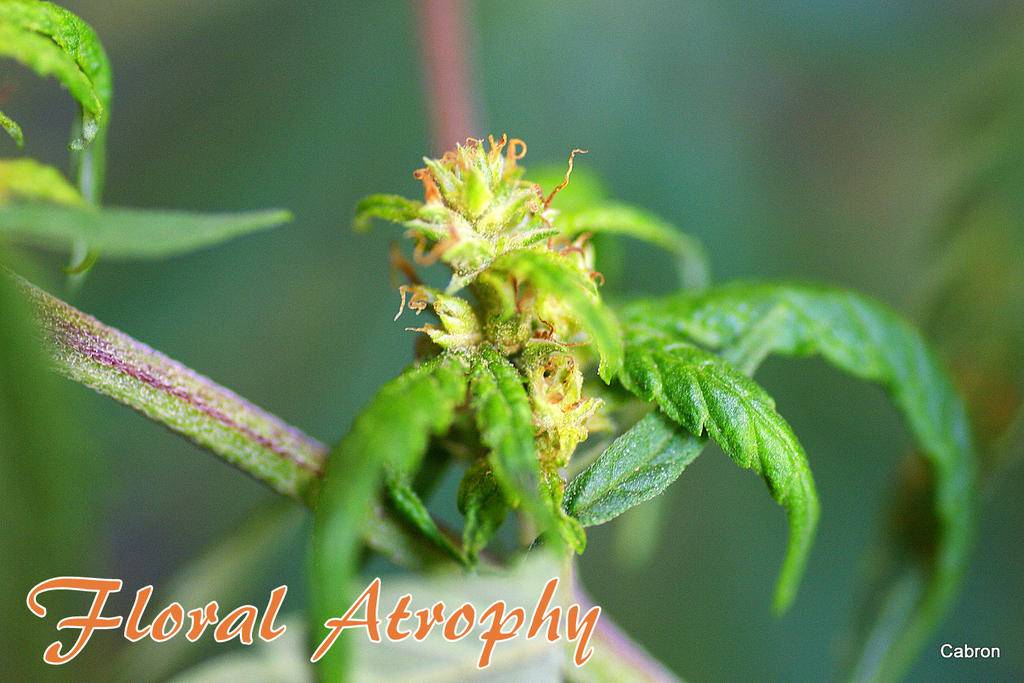
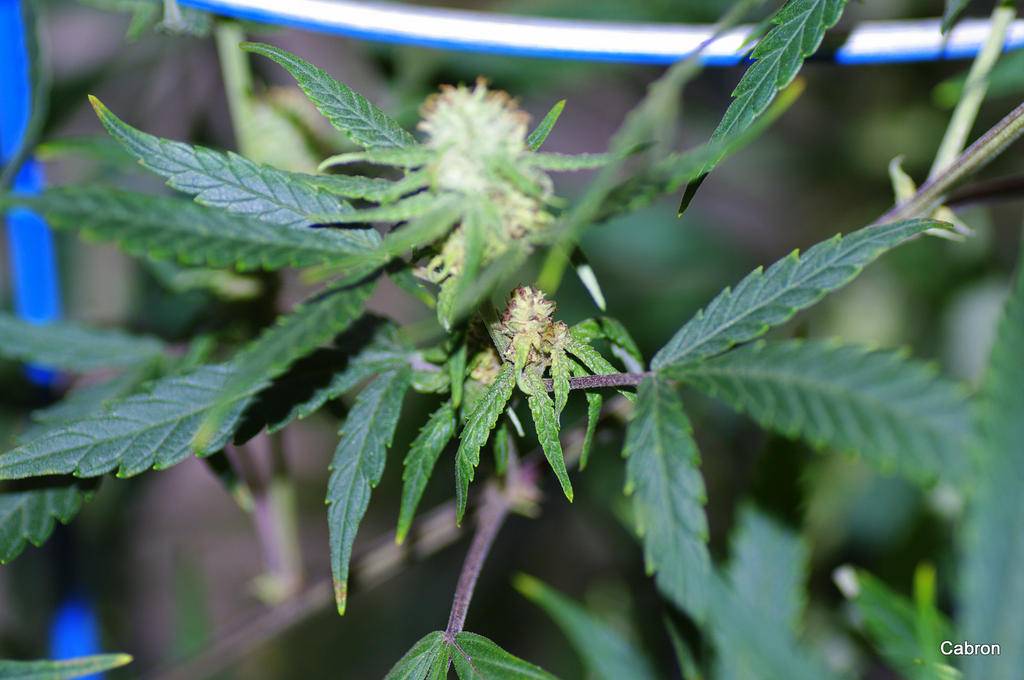

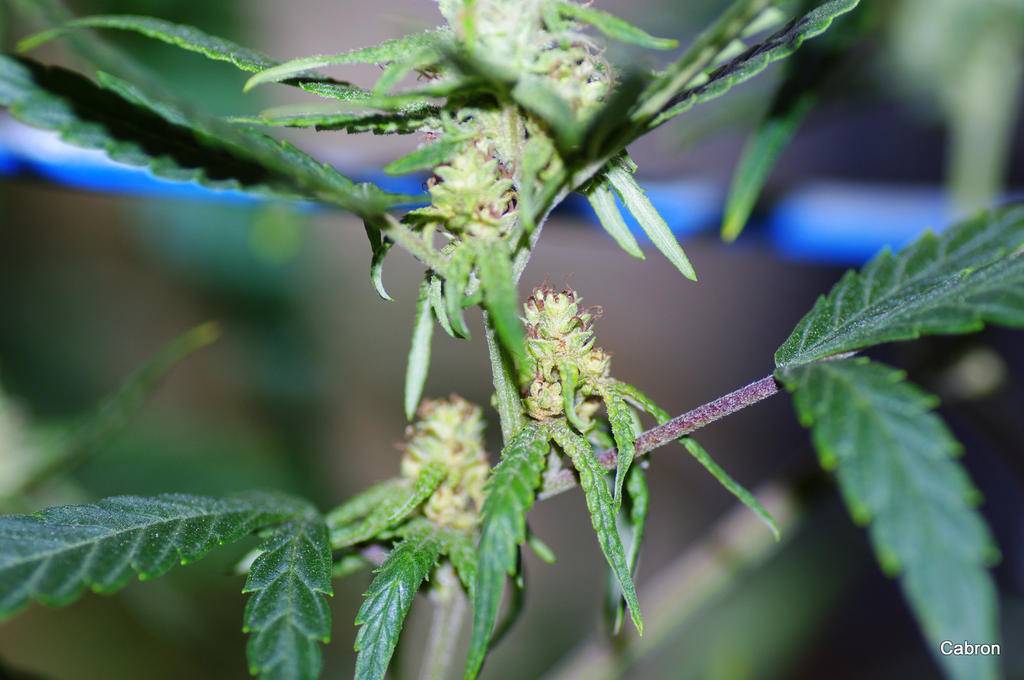
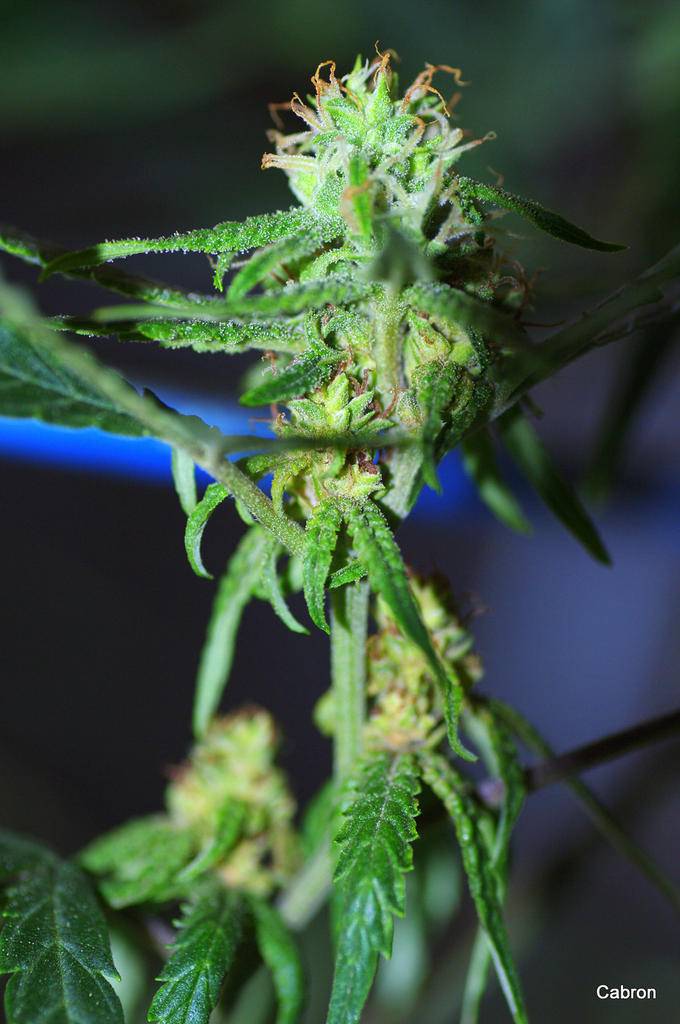
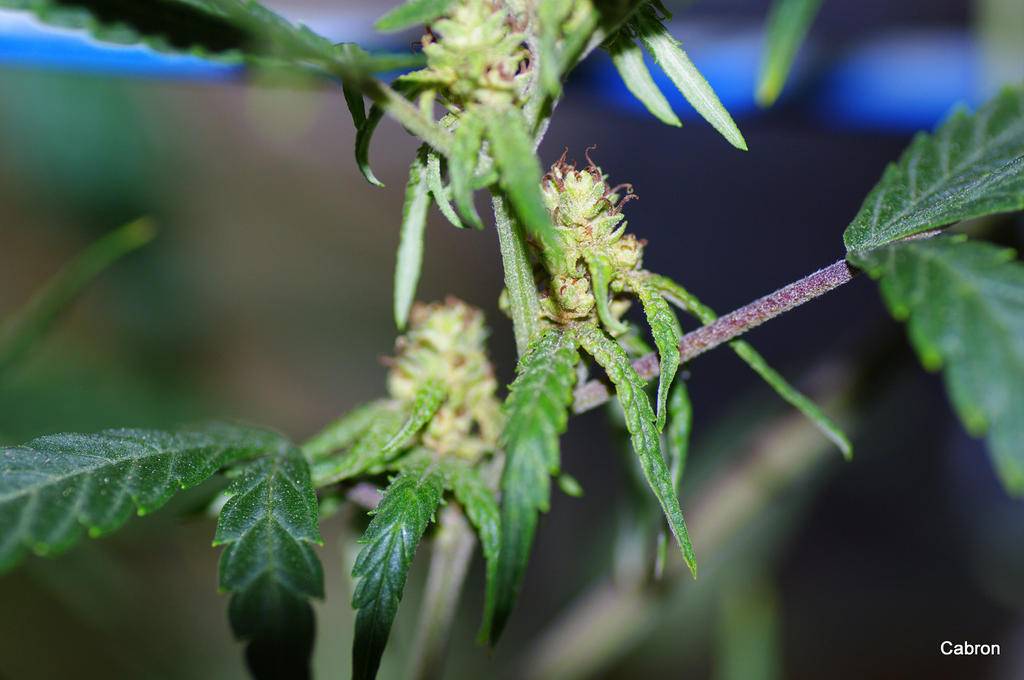
It's been sidetracked,fouled,misinterpreted and taken in a direction that I had not intended..
This is what I am referring to people,,,,NOT some harmless mottling in the chlorophyll of
a fan leaf in some Cuts that are circulating..
This virus will completely destroy your hopes of any grow...any harvest...end of story..
what many of you have shown here in this thread is NOT! what I have in mind ..
Lucky for you,,,but some have shown pics of this very virus....
When you see these symptoms please refer back to page 1 and read it!
Burn everything ,,,dispose of everything ,kill all bugs etc
Then Pray....it never comes back....
But it almost always does...somehow..
This is an Old Sog Super Silver Haze cut 23 days into flower....
The budsites start to die off from the bottom upward..
a Yellow tinted powdery coating usually envelops the outer surfaces of the
vegetation in the localized areas of concentrated infection.
Leaving the tops appearing healthy for the time being...
This is the end Game and worst case scenario...
The symptoms I showed initially in this thread are what points to an infected plant
that will eventually completely fail as with these pics....
Please understand the difference...
This is not what Chem cuts have .....
This is Zombie Virus!
Creeping Death

